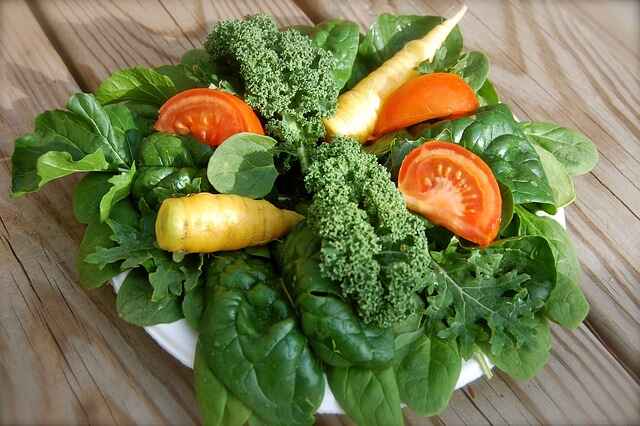What Is Iron?
Iron (Fe) is a crucial mineral that supports the maintenance of healthy blood. It’s a key part of hemoglobin, which is like a tiny oxygen carrier in our red blood cells. Hemoglobin helps take oxygen from our lungs to all our body parts. It is necessary for muscles, growth, brain development, and making certain hormones. The two types of iron in our food is heme iron (in meat, seafood, and poultry) and nonheme (in plants and iron-fortified foods). (Source)
About 4-5 million Americans experience iron-deficiency anemia each year, which is a lack of iron. It is the most prevalent dietary deficiency in the world and results in severe exhaustion and dizziness. It affects people of all ages, but those who are most at risk for this ailment include children, pregnant or menstrual women, and kidney dialysis patients.
What Are The Functions Of Fe?
Oxygen Transport: Iron is a crucial component of hemoglobin, a protein in red blood cells. Hemoglobin binds to oxygen in the lungs and carries it throughout the body, ensuring that all body tissues receive the oxygen they need for energy production. (Source)
Muscle Function: Iron is also present in myoglobin, a protein in muscles. Myoglobin stores and releases oxygen in muscle cells, which is essential for muscle metabolism and function.
Energy Production: Iron plays an important role in the electron transport chain, a series of chemical reactions that occur in mitochondria (the “powerhouses” of cells). This chain generates adenosine triphosphate (ATP), the body’s primary source of energy.
Brain and Cognitive Development: Adequate iron is necessary for proper brain development, especially in infants and young children. Iron deficiency in early life can lead to developmental delays and cognitive impairments. (Source)
Immune System Function: Iron supports the growth and function of immune cells that help defend the body against infections. It is essential for the immune system’s ability to respond to pathogens.
Cellular Function: Fe is important for the proper functioning of many enzymes and proteins involved in various cellular processes, including DNA synthesis and repair. (Source)
Maintaining Healthy Skin, Hair, and Nails: Iron helps in production of collagen, a protein that supports healthy skin, hair, and nails.
Overall Growth and Development: Iron is essential for physical growth, especially in children, as well as for the development of the nervous system.
Blood Cell Formation: Fe is an important element in the production of red blood cells. (Source)
Regulating Body Temperature: Iron helps regulate body temperature by supporting the cellular processes that generate heat. (Source)

How Much Iron Do I Need? What Are The Recommended Amounts?
| Age | Male | Female | Pregnancy | Lactation |
|---|---|---|---|---|
| Birth to 6 months | 0.27 mg* | 0.27 mg* | ||
| 7–12 months | 11 mg | 11 mg | ||
| 1–3 years | 7 mg | 7 mg | ||
| 4–8 years | 10 mg | 10 mg | ||
| 9–13 years | 8 mg | 8 mg | ||
| 14–18 years | 11 mg | 15 mg | 27 mg | 10 mg |
| 19–50 years | 8 mg | 18 mg | 27 mg | 9 mg |
| 51+ years | 8 mg | 8 mg |
* Adequate Intake (AI)
RDA: For individuals aged 19 to 50, the RDA is 8 mg for men, 18 mg for women, 27 mg during pregnancy, and 9 mg during lactation. Due to blood loss during menstruation and increased blood circulation needed during pregnancy, women and pregnant women experience larger quantities of blood loss.
UL: The daily intake amount that is least likely to have a negative impact on health is known as the Tolerable Upper Intake Level. The UL for Fe for all males and females ages 14 and older is 45 mg per day. The UL for children under age 18 is 40 mg. (Source)
What Happens If There Is Excess Of Fe?
Side effects of taking high doses (over 20mg) of Fe include:
- Constipation (Source)
- feeling sick
- being sick
- stomach pain
Very high doses of Fe can be fatal, particularly if taken by children, so always keep iron supplements out of the reach of children.
Also Read: All about Calcium: Functions, Daily Dose, Deficiency, Sources & Toxicity
What Are The Food Sources Of Fe? What Are The Foods that Contain Iron?
The highest sources of heme iron are meat, poultry, and shellfish. Non-heme iron can be found in fortified grains, nuts, seeds, legumes, and vegetables. Many types of bread, cereals, and infant formula in the US are iron-fortified.
The body can absorb heme Fe better than non-heme Fe. Non-heme Fe might be better or worse absorbed depending on a number of circumstances. Non-heme Fe can be better absorbed when taken with vitamin C and heme Fe in the same meal. Non-heme iron absorption can be hampered by bran fiber, high calcium intake, especially from supplements, and plant compounds such as phytates and tannins. (Source)
Also Read: Dates Health Benefits: Nutritional Value and Uses

Sources of heme Fe:
- Oysters, clams, mussels
- Beef or chicken liver
- Organ meats
- Canned sardines
- Beef
- Poultry
- Canned light tuna
Sources of non-heme Fe:
- Fortified breakfast cereals
- Beans (Source)
- Dark Chocolate (at least 45%) (Source)
- Lentils
- Spinach
- Potato with skin
- Nuts, seeds (Source)
- Enriched rice or bread
Also Read: 10 Foods That Fulfil Your Daily Dose of Iron
Deficiency Of Iron: The Possible Disorders And Their Symptoms
A Fe deficiency is seen most commonly in children, women who are menstruating or pregnant, and those eating a diet lacking Fe.
Fe deficiency occurs in stages. The mild form begins with a decrease in stored iron, usually either from a low-iron diet or from excessive bleeding. If this does not resolve, the next stage is a greater depletion of iron stores and a drop in red blood cells. Eventually, this leads to iron-deficiency anemia (IDA) where Fe stores are used up and there is a significant loss of total red blood cells.
Signs of IDA:
- Fatigue, weakness
- Lightheadedness
- Confusion, loss of concentration
- Sensitivity to cold
- Shortness of breath
- Rapid heartbeat
- Pale skin
IDA is usually corrected with oral iron supplements of up to 150-200 mg of elemental Fe daily. Those at high risk of IDA may be prescribed 60-100 mg daily.
Toxicity: In Case Of Excess Of Iron
Toxicity is rare because the body regulates iron absorption and will absorb less if Fe stores are adequate. Excessive Fe occurs most often from taking high-dosage supplements when not needed or from having a genetic condition that stores too much Fe.
Common signs:
- Constipation
- Upset stomach
- Nausea, vomiting
- Abdominal pain
People with hemochromatosis are educated to follow a low-iron diet and to avoid iron and vitamin C supplements. If left untreated, iron can build up in certain organs so there is a higher risk of developing conditions like liver cirrhosis, liver cancer, or heart disease.
Also Read: Chia Seeds Health Benefits Supported by Science
Check out the Food Nutrients section on Health Views Online where we talk in detail about different vitamins and minerals.





